Abstract
The selective destruction of temporal and frontal lobe structures by herpes simplex encephalitis has been explained as a consequence of the proximity of those regions to the point of entry of the virus in the encephalon, through olfactory pathways or meningeal branches of the trigeminal nerves. An alternative hypothesis is presented: that the encephalitis is due to a special affinity of the herpes simplex Type 1 virus for the limbic cortices, that is, that distinctive neuroanatomical, neurochemical and neuroimmunological properties of those cortices permit the virus to manifest its destructive behaviour, regardless of the route of entry to the CNS, possibly during altered immunological states. The study of the neurochemical and neuroimmunological properties of the limbic cortices may be a useful approach to the enigma of why and when herpes simplex Type 1 causes encephalitis.
Full text
PDF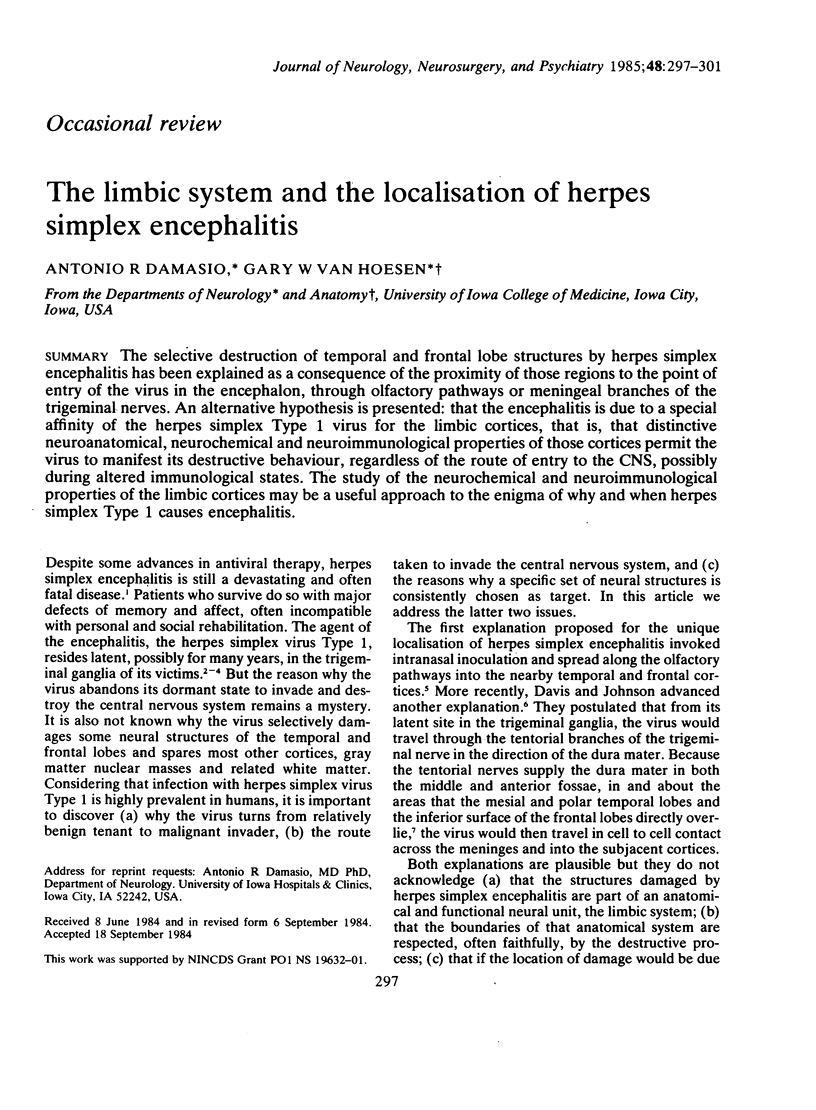
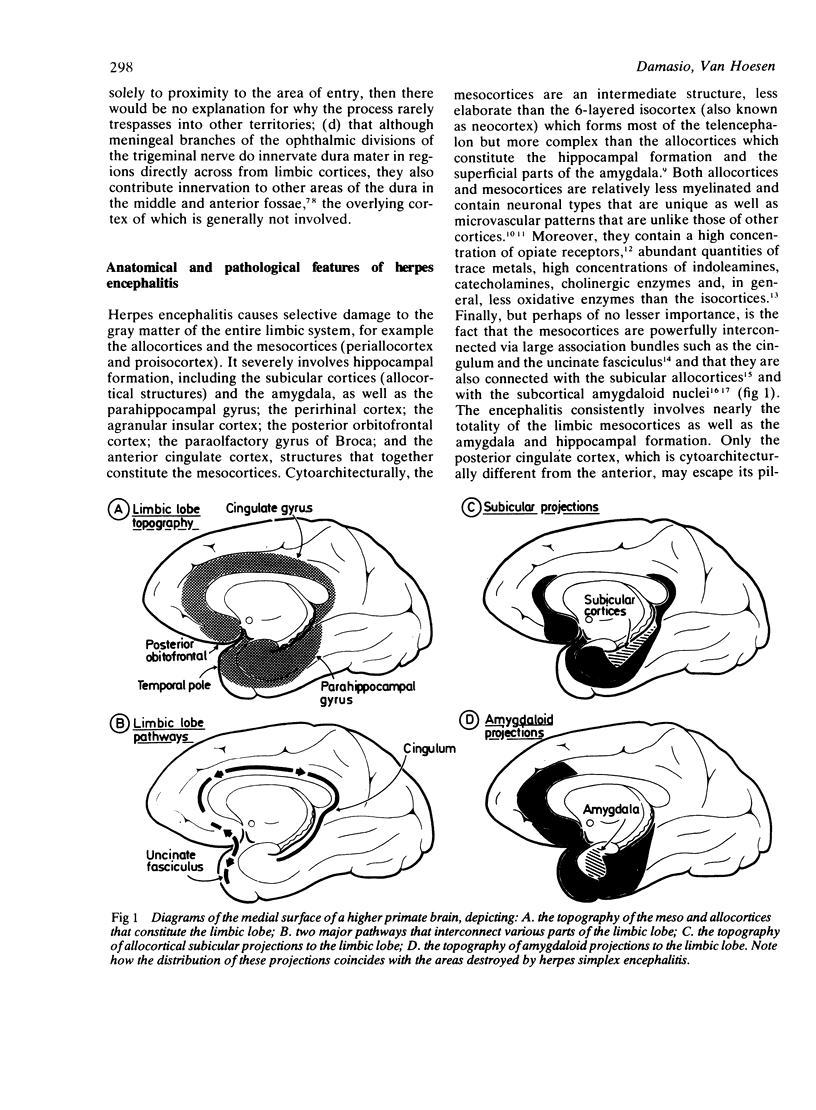
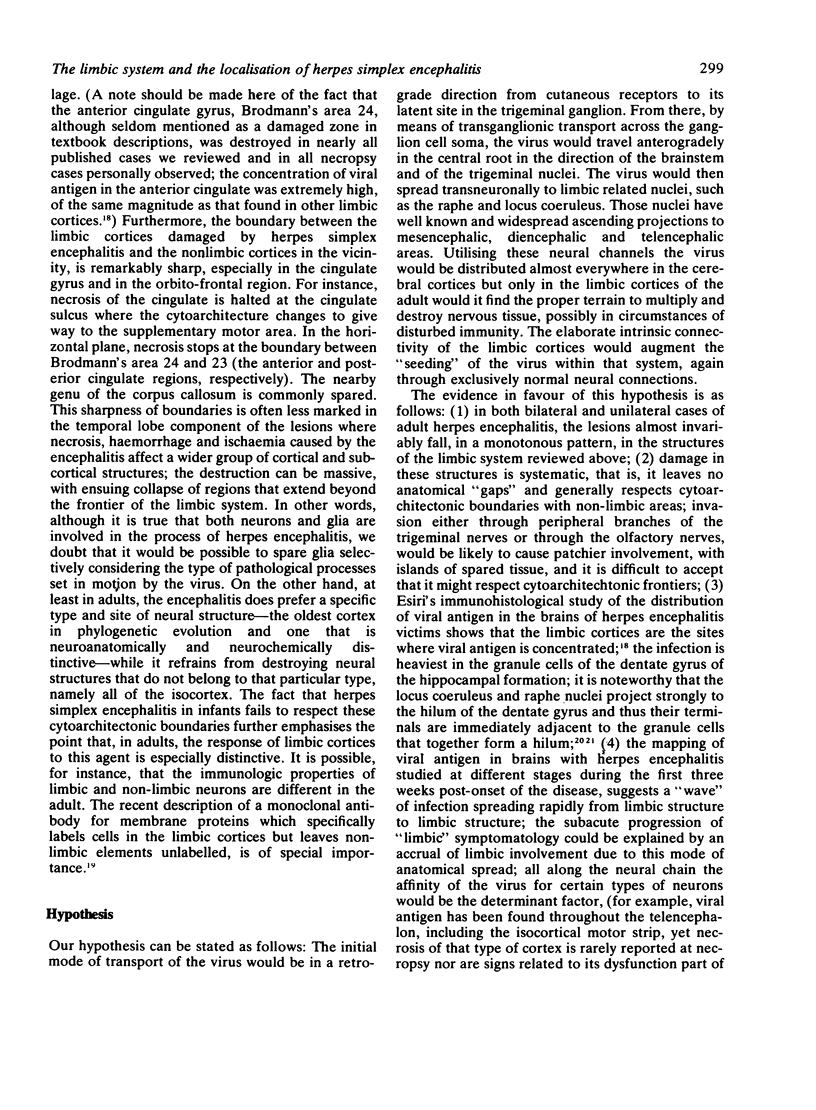
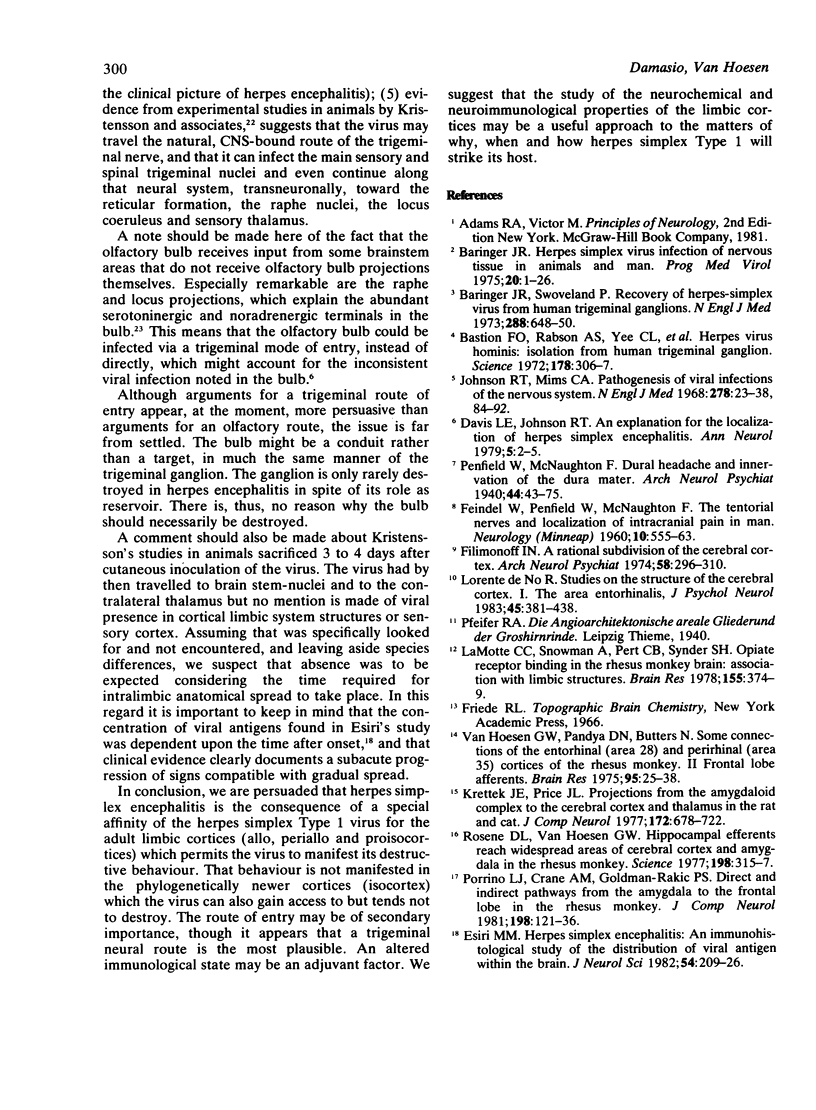
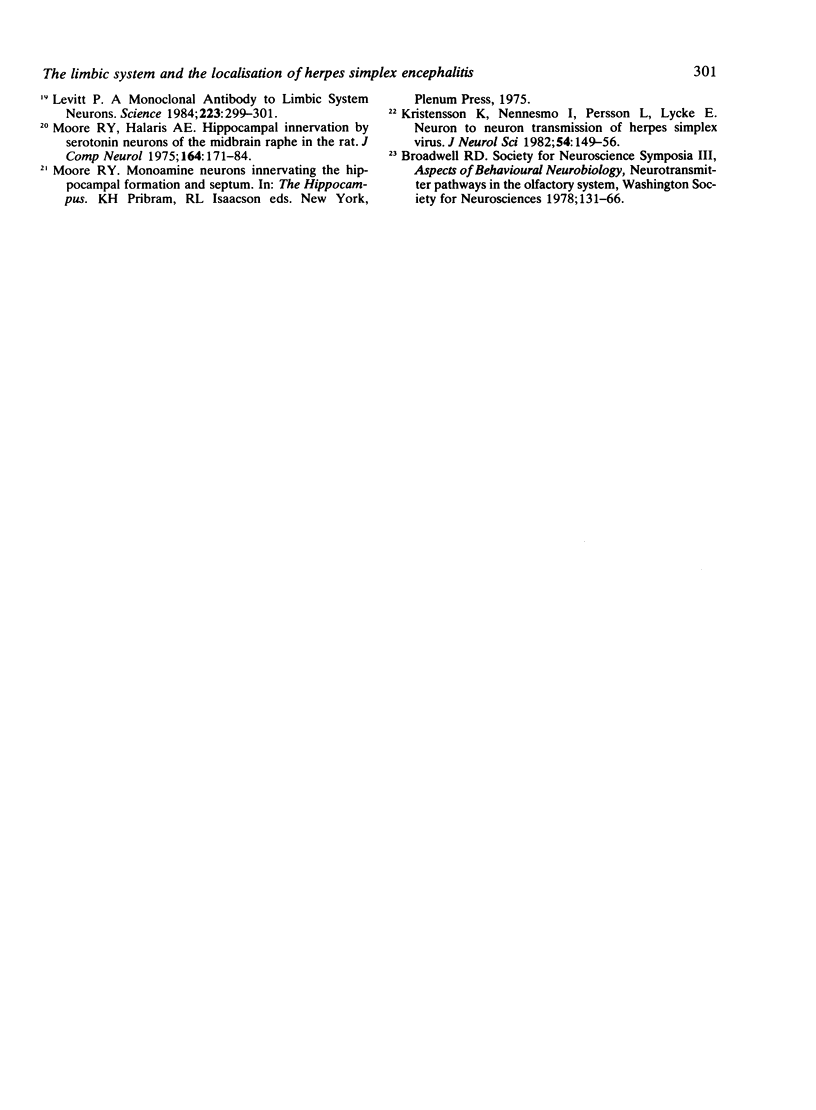
Selected References
These references are in PubMed. This may not be the complete list of references from this article.
- Baringer J. R. Herpes simplex virus infection of nervous tissue in animals and man. Prog Med Virol. 1975;20:1–26. [PubMed] [Google Scholar]
- Baringer J. R., Swoveland P. Recovery of herpes-simplex virus from human trigeminal ganglions. N Engl J Med. 1973 Mar 29;288(13):648–650. doi: 10.1056/NEJM197303292881303. [DOI] [PubMed] [Google Scholar]
- Bastian F. O., Rabson A. S., Yee C. L., Tralka T. S. Herpesvirus hominis: isolation from human trigeminal ganglion. Science. 1972 Oct 20;178(4058):306–307. doi: 10.1126/science.178.4058.306. [DOI] [PubMed] [Google Scholar]
- Davis L. E., Johnson R. T. An explanation for the localization of herpes simplex encephalitis? Ann Neurol. 1979 Jan;5(1):2–5. doi: 10.1002/ana.410050103. [DOI] [PubMed] [Google Scholar]
- Esiri M. M. Herpes simplex encephalitis. An immunohistological study of the distribution of viral antigen within the brain. J Neurol Sci. 1982 May;54(2):209–226. doi: 10.1016/0022-510x(82)90183-6. [DOI] [PubMed] [Google Scholar]
- FEINDEL W., PENFIELD W., McNAUGHTON F. The tentorial nerves and Iocalization of intracranial pain in man. Neurology. 1960 Jun;10:555–563. doi: 10.1212/wnl.10.6.555. [DOI] [PubMed] [Google Scholar]
- Johnson R. T., Mims C. A. Pathogenesis of viral infections of the nervous system. N Engl J Med. 1968 Jan 4;278(1):23–contd. doi: 10.1056/NEJM196801042780106. [DOI] [PubMed] [Google Scholar]
- Krettek J. E., Price J. L. Projections from the amygdaloid complex to the cerebral cortex and thalamus in the rat and cat. J Comp Neurol. 1977 Apr 15;172(4):687–722. doi: 10.1002/cne.901720408. [DOI] [PubMed] [Google Scholar]
- Kristensson K., Nennesmo L., Persson L., Lycke E. Neuron to neuron transmission of herpes simplex virus. Transport of virus from skin to brainstem nuclei. J Neurol Sci. 1982 Apr;54(1):149–156. doi: 10.1016/0022-510x(82)90227-1. [DOI] [PubMed] [Google Scholar]
- LaMotte C. C., Snowman A., Pert C. B., Synder S. H. Opiate receptor binding in rhesus monkey brain: association with limbic structures. Brain Res. 1978 Oct 27;155(2):374–379. doi: 10.1016/0006-8993(78)91033-8. [DOI] [PubMed] [Google Scholar]
- Levitt P. A monoclonal antibody to limbic system neurons. Science. 1984 Jan 20;223(4633):299–301. doi: 10.1126/science.6199842. [DOI] [PubMed] [Google Scholar]
- Moore R. Y., Halaris A. E. Hippocampal innervation by serotonin neurons of the midbrain raphe in the rat. J Comp Neurol. 1975 Nov 15;164(2):171–183. doi: 10.1002/cne.901640203. [DOI] [PubMed] [Google Scholar]
- Porrino L. J., Crane A. M., Goldman-Rakic P. S. Direct and indirect pathways from the amygdala to the frontal lobe in rhesus monkeys. J Comp Neurol. 1981 May 1;198(1):121–136. doi: 10.1002/cne.901980111. [DOI] [PubMed] [Google Scholar]
- Rosene D. L., Van Hoesen G. W. Hippocampal efferents reach widespread areas of cerebral cortex and amygdala in the rhesus monkey. Science. 1977 Oct 21;198(4314):315–317. doi: 10.1126/science.410102. [DOI] [PubMed] [Google Scholar]
- Van Hoesen G., Pandya D. N., Butters N. Some connections of the entorhinal (area 28) and perirhinal (area 35) cortices of the rhesus monkey. II. Frontal lobe afferents. Brain Res. 1975 Sep 12;95(1):25–38. doi: 10.1016/0006-8993(75)90205-x. [DOI] [PubMed] [Google Scholar]


